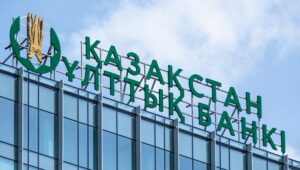
The National Bank of Kazakhstan has raised its economic growth forecast for 2024-2025 to 4-5% per year from the previously expected 3.5-4.5%, the regulator said in a statement citing its updated macroeconomic forecasts.
This year, GDP growth is still expected to reach 4.2-5.2%.
“Forecasts for the growth of Kazakhstan’s economy in the medium term have been improved. The expansion of business activity will be driven by sustained domestic demand, increased budget expenditures and the recovery of the oil sector. (…) The risks to the GDP forecast are associated with possible problems of access to international markets for Kazakh exports, as well as the likelihood of not achieving the planned oil production,” the statement said.
In addition, the inflation forecast has been adjusted. In the short term, uncertainty about price growth has decreased. In the baseline scenario, inflation is projected to be in the range of 10-12% this year (previous forecast – 11-14%), 7.5-9.5% in 2024 (9-11%), and 5.5-7.5% in 2025 (corresponding to the previous forecast).
“At the same time, without taking into account the direct effect of the increase in utility tariffs, to which the NBU does not respond by changing the key policy rate, the medium-term inflation target of 5% is expected to be reached by the end of 2025. This will be facilitated by the further easing of pressure from the external environment and monetary conditions that are in the restraining zone,” the statement said.
The main risks to the inflation forecast, according to the National Bank, include increased fiscal stimulus, “unanchored inflation expectations,” accelerating inflation in Russia and a possible rise in world food prices due to the failure to renew the grain initiative. Another risk in the forecast is the continuation of pricing reforms in the Kazakh fuel and lubricants market.
Kazakhstan’s economy grew by 3.1% in 2022, with inflation at 20.3%.
For more information on macroeconomics, please see the analytical programs of the Expert Club at https://youtu.be/zCJ1cU3n0sY?si=zfnGIkt5zdhX_j3x
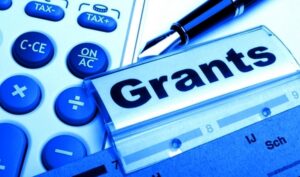
For a year of action of the governmental project of grant programs “eRabota” the state has invested in business development 4 billion UAH, from which 2,4 billion UAH were given out in the form of grants for development of the processing enterprises, informed the first vice-prime minister of Ukraine – Minister of Economy Yulia Sviridenko.
“On July 1 last year the government launched grant programs “eRabota” to support businesses in this difficult time, to help them recover and develop. During the year, more than 5,600 entrepreneurs have already received grants under these programs. In total the government has invested UAH 4 billion to activate the business sphere”, – as she said in the press release of the Ministry of Economy and Trade of Ukraine.
It is specified that with the grant funds the Ukrainians got an opportunity to start their own business, the already operating enterprises opened new directions, expanded the spheres of activity, increased the production of goods and services.
According to the message, since the start of the project “eRabota” in July 2022 under the program “Own Business” 5061 microgrants were given to the total amount 1.2 billion UAH, for the development of processing enterprises – 455 grants worth 2.4 billion UAH, for gardening and greenhouse development – 88 grants worth 325 million UAH.
The Ministry of Economy reminded that both current entrepreneurs and people without experience in business may apply for a grant. Applications are submitted through the portal “Diya” together with a business plan. An obligatory condition of receiving a grant is creation of new workplaces – from 1-2 at granting a micro-grant to several tens at granting grants under other programs.
Grant funds shall be returned to the state through taxes and fees paid during the operation of the enterprise within three years.
As reported, the eRabotka project was introduced by the government in July 2022 to support businesses and stimulate the creation of new jobs. It includes several grant programs. In particular, these are programs of micro grants for the opening or development of their own business, grants for the creation and development of processing enterprises, the establishment of orchards and vineyards, greenhouse industry.
Earlier, the Kiev Analytical Center “Expert Club” and its founder Maxim Urakin together with the founder of “Granta” company and grant projects implementation expert Olga Shaverina launched a series of YouTube videos devoted to the peculiarities of grant financing. Read more in the video at
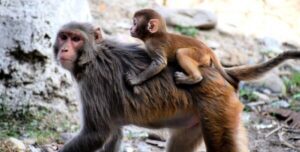
There is no significant risk of monkeypox spreading in Ukraine, the disease does not threaten Ukraine with a large-scale epidemic, Doctor of Medicine Dmytro Ivanov has said.
“Perhaps in the future, the incidence of monkeypox will gain momentum, but today it is more of a hype than a medical problem,” he said on the Expert Club YouTube channel.
At the same time, Ivanov said that at present, identifying cases during the incubation period is almost impossible due to the lack of test systems and mechanisms for screening and examining people who come to Ukraine.
At the same time, the expert said that Ukrainian infectious disease specialists are “fundamentally ready for the emergence of this infection and will be ready to diagnose the disease.”
“If we are talking about monkeypox as a natural pathogen, then it should not give mass distribution and present some kind of medical problem,” he said.
As reported, according to WHO, since the beginning of 2022, more than 1,600 cases of monkeypox have been recorded in the world in 39 countries, of which 72 have been fatal. In Europe, the largest number of cases occurs in the UK, Spain, Portugal, Germany and the Netherlands.

The Club of Experts YouTube channel has released a new video dedicated to the prospects for the development of the volunteer movement in Ukraine after the start of the war and solving the main problems that our citizens may face when bringing humanitarian aid to Ukraine.
According to Maxim Urakin, the founder of the Club of Experts, the humanitarian situation that arose in Ukraine after the outbreak of hostilities forced tens of thousands of people to volunteer.
“At the same time, many people faced with the incomprehensibility of the processes of crossing the border and importing certain goods into the country,” the expert emphasized.
In his commentary, the head of the International Technology Transfer Association (ITTA), Artem Goncharenko, noted that when organizing volunteer assistance, one should understand what needs the recipients of volunteer assistance have. At the same time, in his opinion, individual and general requests of both military and ordinary citizens should be distributed.
“It is important to understand that we cannot offer a single universal solution. Need a personal approach (…). At the same time, different volunteer organizations should unite to improve the coordination of work,” he said.
In turn, Evgenia Litvinova, Chair of the Ukrainian Exporters’ Club, analyzed the latest legislative changes that have greatly simplified the delivery of international humanitarian aid to Ukraine.
In their presentation, the experts provided a detailed explanation on the following problematic issues:
– Who has the right to bring humanitarian aid to Ukraine?
– On the basis of what documents can humanitarian aid be imported?
– What changes have been introduced when filling out customs declarations?
– What shipping documents do you need to have when crossing the border?
For more details, see the video on the YouTube channel “Expert Club” at the link:
EXPERT CLUB, GONCHARENKO, HUMANITARIAN AID, IMPORT, LITVINOVA, URAKIN
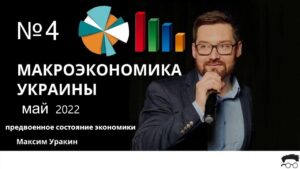
In its new video, the YouTube channel “Club of Experts” analyzed the situation in the Ukrainian economy before the start of the Russian aggression. As you know, the State Statistics Service of Ukraine has temporarily suspended the publication of statistical information for the period of martial law, as well as for three months from the moment it ends. The exception is the publication of data on the consumer price index, separate information on statistical indicators for 2021, as well as for the period January-February 2022.
If we return to the indicators of the beginning of the year, at that time we could talk about economic growth and recovery after the recession caused by the COVID-19 pandemic, says the founder of the Club of Experts, Candidate of Economic Sciences Maxim Urakin.
“Officially, the number of unemployed in the country, according to the State Employment Center, as of January 2022, was just over 358,000 people. In this direction, there was a positive trend and the recovery of jobs after the labor market crisis that was caused by the pandemic,” he explained.
In addition, the expert noted that according to the State Statistics Service, Ukraine’s GDP in 2021 grew by 3.4% after a decline of 3.8% a year earlier. At the same time, there was an increase in industrial production and retail trade within the country.
“Industrial production in Ukraine in 2021 increased by 1.1% after a 5% drop in 2020. At the same time, in 2021, compared to the twentieth, the retail trade turnover increased significantly, by more than ten percent and amounted to more than one trillion four hundred forty-three billion hryvnia,” Urakin added.
All this, according to the founder of the Club of Experts, may indicate that in the pre-war period the country’s economy showed positive indicators of development.
The full video can be viewed on the YouTube channel “Expert Club” at the link:
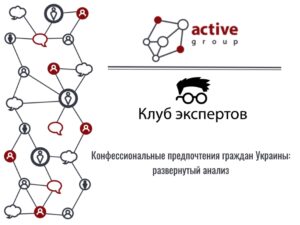
Only 10% of Ukrainians, who define themselves as believers, regularly visit religious houses. These are the data of a sociological study conducted by the Active Group social research company and the Expert Club analytical center and presented during a press conference at Interfax-Ukraine.
“Compared to the indicators of 2020, the number of people, who consider themselves rather non-believers, has grown in Ukraine. This figure has increased from 8 to 13% over the year. This may be due to the reverse transition from religious practices to secular ones due to the end of the critical phase of the pandemic in our country,” the co-founder of the Expert Club, political scientist Daniel Bogatyrev said.
“Among people who consider themselves believers, 86% identify themselves as Orthodox Christians, 9% are Catholics, 1.2% are Islam believers, 0.7% Protestantism believers, 0.3% pagans, and 0.2% Judaism believers,” Head of Active Group Oleksandr Pozniy said, summing up the results of the study.

In addition, Pozniy noted the correlation between adherence to Orthodox Christianity and the age of citizens. The study revealed an increase in the number of Orthodox believers among middle-aged and elder people.
According to Editor-in-Chief of the Ukraine in Arabic news portal Mohammad Farajallah, faith should meet the traditions and life of the nation in which it prevails.
“Ukraine has always been a multinational and poly-confessional state, but Orthodoxy has been and will remain the main religion in Ukraine. As for Islam here, the percentage of Muslims has remained generally unchanged thanks to the indigenous people, primarily the Crimean Tatars… Over the 30 years of independence, the number of immigrants professing Islam in Ukraine has not exceeded 50,000-100,000 people, which is not a significant figure,” Farajallah said.
Many people select a particular confession based primarily on political considerations, political scientist and Head of the UP Foundation, Kost Bondarenko, said.
“If one looks at the realities, political engagement does not make it possible to talk about the churching of parishioners of certain confessions. It is one thing to declare the faith, but another thing is churching. This can be observed every year, when at the end of July religious processions are organized in honor of the feast of the Baptism of Rus. At the same time, the processions of the two confessions (UOC and OCU) are different. The number of parishioners of the UOC is usually 200,000-300,000 people who walk with crosses and banners, showing their adherence to Orthodoxy. At the same time, during the processions of the OCU, parishioners mostly go with national flags and portraits of the heroes of the Ukrainian pantheon. This really indicates to two approaches to religiosity in these confessions,” Bondarenko said.
Watch the full video https://www.youtube.com/watch?v=HazeCIxjfVo
Subscribe to the Expert Club channel here.